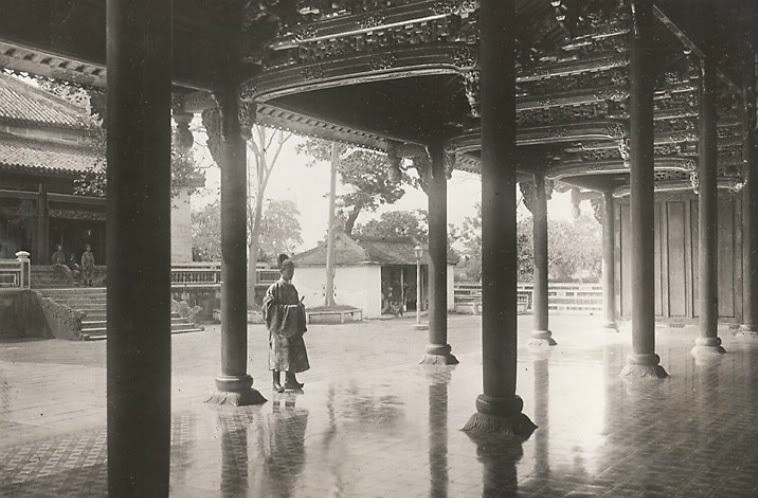 |
| The structure is made of wood, with a glazed tile roof; the beams follow the Minh Mang era style; and a stone path leads to the gate (Archive Photo) |
The excavation will take place from May 15, 2024, to July 15, 2024, covering an area of 60 square meters, consisting of three holes, each 20 square meters. The excavation will be led by Ms. Nguyen Thi Thao Giang from the National Museum of History.
During the excavation period, the licensed agency must protect the stratigraphy of the site and is responsible for educating the public about local cultural heritage conservation. No official conclusions may be released without the agreement of the supervising agency and the Department of Cultural Heritage.
Artifacts collected during the excavation must be preserved and protected by Hue Royal Antiquities Museum and Hue Monuments Conservation Center to prevent damage or loss. A report on the protection and promotion of these artifacts must be submitted to the Minister of Culture, Sports, and Tourism.
 |
| An archive photo shows the Dai Cung Mon Gate in the Imperial City of Hue before its destruction during the war |
After the archaeological excavation concludes, Hue Monuments Conservation Center and the National Museum of History must submit a preliminary report and propose a management and protection plan for the excavated area within one month. A scientific report must be submitted within one year to the Ministry of Culture, Sports, and Tourism.
According to Hue Monuments Conservation Center, they are currently completing related procedures and plan to begin the excavation in June, which will last for one month.
The Dai Cung Mon Gate, the main gate to the Forbidden City, was built in 1833 during the reign of Emperor Minh Mang. The gate, made entirely of exquisitely crafted wood with a yellow glazed tile roof, was destroyed along with the Can Chanh Palace and other structures in the Forbidden City during the war, leaving only the foundation. Hue Monuments Conservation Center is currently preparing to restore the Dai Cung Mon Gate.
